Genetic Information
Did you know that the nucleus of each of the trillions of cells making up the human body includes a data bank big enough to fill a 900-volume encyclopaedia?
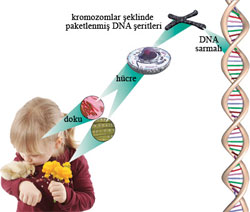 |
DNA includes not only the plan of cells, but also the complete body plan of living things. The structure of our internal organs, or the shape of a bird's wings, in short, everything is encoded in DNA down to its smallest details. |
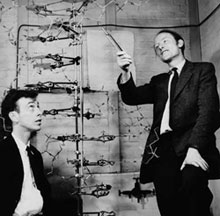 |
discovered by two scientists named Francis Crick and James Watson. Despite being an evolutionist, Crick said that DNA could never have emerged by coincidence. |
DNA is a huge molecule hidden in the nucleus of every living cell. All physical traits of a creature are coded in this helical molecule. All the information about our bodies, from the colour of our eyes to the structure of our internal organs and the form and functions of our cells, are encoded in sections called genes in DNA.
The DNA code is made up of the sequence of four different bases. If we think of each of these bases as a letter, DNA can be likened to a databank made up of an alphabet of four letters. All the information about a living thing is stored in this databank.
If we attempted to write down the information in DNA, this would take up approximately a million pages. This is equal to an encyclopaedia forty times bigger than The Encyclopaedia Britannica, which is one of mankind's greatest accumulations of information. This incredible information is stored in the tiny nucleus of our cells measuring about a thousandth of a millimeter in size.
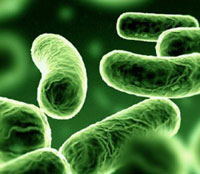 | REPLICATION MIRACLE If you leave a bacterium in a suitable environment, in a few hours you will see that it has produced hundreds of copies of similar bacteria. Every living cell has the ability to "copy itself". Until the discovery of DNA, how this miraculous process took place was unknown. With the discovery of DNA, it was revealed that every living cell has a "data bank" that stores all the information about itself. This discovery displayed the wonder of creation.
|
It is calculated that a DNA chain small enough to fill a teaspoon has the capacity to store all the information contained in all the books ever written.
Of course, such an amazing structure could never have been formed by chance and this proves that life is created by God. Not surprisingly, evolutionists are unable to bring any explanation to the origin of DNA. However, they still embrace the "chance" hypothesis simply for the sake of keeping the theory alive. A well-known molecular biologist from Australia, Michael Denton, explains this in his book Evolution: A Theory in Crisis:
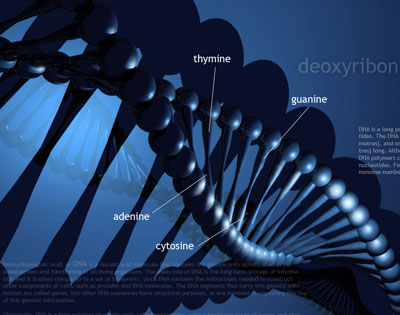 | THE INFORMATION IN THE HELIX
The DNA molecule comprises millions of base pairs organized in a helical shape. If a DNA molecule in only one of our cells were unfolded, it would make a one-metre long chain. This chain, squeezed into the cell nucleus, is only as big as a hundred thousandth of a millimeter with an amazing "packaging" system. DNA has an alphabet with four "letters".
|
To the skeptic, the proposition that the genetic programmes of higher organisms, consisting of something close to a thousand million bits of information, equivalent to the sequence of letters in a small library of one thousand volumes, containing in encoded form countless thousands of intricate algorithms controlling, specifying, and ordering the growth and development of billions and billions of cells into the form of a complex organism, were composed by a purely random process is simply an affront to reason. But to the Darwinist, the idea is accepted without a ripple of doubt - the paradigm takes precedence!11
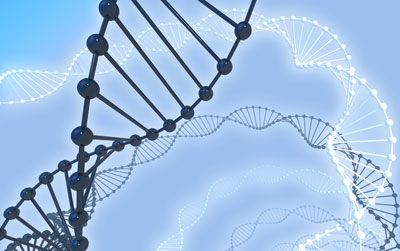 |
The biochemical make-up of a wolf's fur, its thickness, colour or the angle at which it grows are encoded in its DNA Every piece of information is derived from an intelligent source that brings it into being. The fascinating information in DNA is evidence of the supreme wisdom and creative power of God.
|
- An Outdated View: The Theory of Evolution
- The Origin of Life
- The Design in the Protein
- The Design in the Cell
- Genetic Information
- The Design in Nature
- Miller's Experiment
- The Natural Selection Misconception
- Mutations
- Irreducible Complexity
- Impasse of Intermediate Forms
- The Cambrian Period
- Fish and Amphibians
- Coelacanth Misconception
- Reptiles
- Birds and Reptiles
- Archaeopteryx Misconception
- Bird Feathers
- The Origin of Mammals
- Living Fossils
- The Tale of Man's Evolution
- Australopithecus
- Homo Erectus
- A Lost Human Race: Neanderthals
- The Collapse of the Family Tree
- The Bipedalism Impasse
- False Faces
- Piltdown Scandal
- Why is Evolution Defended?
- The Obvious Truth: Creation
